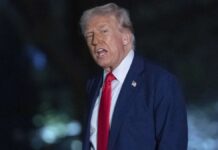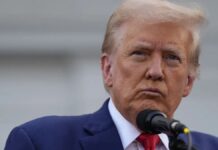Donald Trump Travel Ban: US President Donald Trump on Wednesday issued a full travel ban for citizens of 12 countries and a partial ban for citizens of seven other countries. The aim is to strengthen national security amid growing concerns.
Trump cited recent incidents in Boulder, Colorado, which prompted him to take quick action. Authorities reportedly blamed a man living illegally in the country for these incidents. This order is a new version of Trump’s immigration agenda, which he pushed forward during his first term. It aims to prevent a potential surge in immigration.
The current ban will come into effect from 12:01 a.m. on Monday (June 9), giving government agencies and travelers some time to adjust. A complete travel ban has been imposed on people from Afghanistan, Myanmar, Chad, Republic of Congo, Equatorial Guinea, Eritrea, Haiti, Iran, Libya, Somalia, Sudan and Yemen, while a partial ban has been imposed on citizens of Burundi, Cuba, Laos, Sierra Leone, Togo, Turkmenistan and Venezuela.
What is a travel ban?
A travel ban is a federal policy that prevents or restricts citizens of specific countries from entering the United States. The restrictions can vary from a complete entry ban to a limited suspension of specific visa categories. Trump’s latest announcement is a revival of a policy from his first term that banned travel for people from several countries. Five of the countries affected by that ban reappear in this new list.
What is the reason behind the new ban?
This ban has been imposed a few days after the deadly attack in Boulder, Colorado. Which was allegedly carried out by an Egyptian citizen. Although Egypt is not included in the ban. But President Trump has cited this attack as a reminder of the risks posed by people who overstay their visas or who come from countries with poor screening practices.
Why were these countries selected?
The order divides countries into two categories: those that are under a complete travel ban and those that face visa restrictions. Most of these countries are located in Africa, the Middle East and Latin America.
The Trump administration gave three main reasons for the travel ban-
1 Lack of document security and verification capabilities:
Countries such as Afghanistan, Libya, Eritrea, Somalia, Sudan, Yemen and Venezuela were noted to have unreliable authorities when it comes to issuing passports or checking citizens travelling abroad.
2 High visa overstay rates:
Countries such as Myanmar, Chad, Republic of Congo, Equatorial Guinea, Haiti, Burundi, Laos, Sierra Leone, Togo, and Turkmenistan were included because a large number of citizens overstayed their visas in the US.
3. Links to terrorism or state-sponsored terrorism: Countries such as Iran, Afghanistan, Somalia, Libya, Cuba and Sudan were flagged for alleged involvement in or support for terrorism.
These will get exemption from the ban The White House order states that green card holders will be exempt from the ban. These include those who have a path to US citizenship. People holding dual citizenship, one of the US and the other of the banned country, are also exempted. The order states that it will also have no effect on individuals seeking visas through close family ties to US citizens.
Given that the US will host the World Cup in 2026 and the Olympics in Los Angeles in 2028, athletes and coaches traveling for sporting events will still be allowed to enter the country with their families. Refugees who have already been granted asylum are also exempted. Afghan citizens who supported the US government during the decades-long war that followed the terrorist attacks of September 11, 2001, also fall under this exemption. Iranians escaping religious persecution, especially those from minority communities such as Christians, are also exempted from the ban.
How is it different from the 2017 travel ban? Shortly after taking office in 2017, Trump introduced an executive order banning travel from seven Muslim-majority countries. That order, widely known as the ‘Muslim ban’, sparked chaos at airports, legal challenges and nationwide protests. Over time, the ban evolved, undergoing several changes. It was finally upheld by the Supreme Court in 2018. Unlike the 2017 ban, the new proclamation provides a shorter period before it takes effect. It also includes some specific exemptions.











